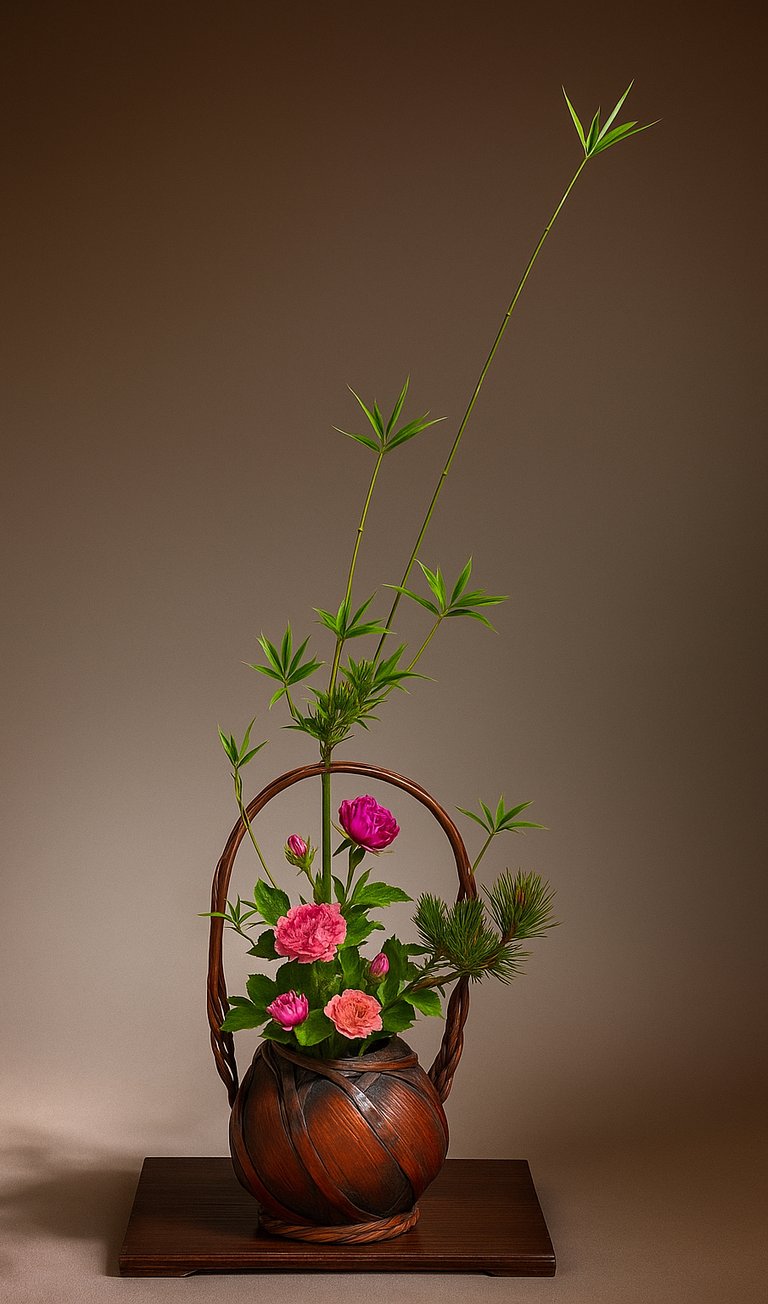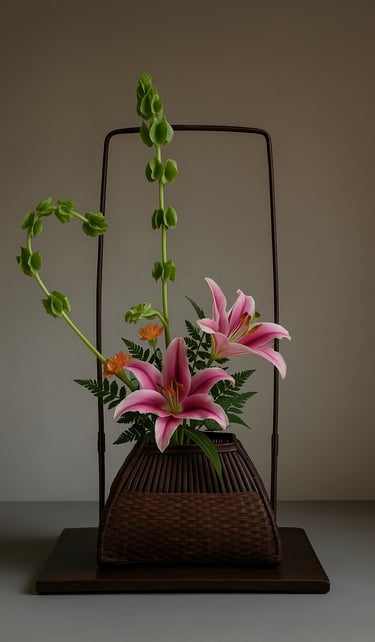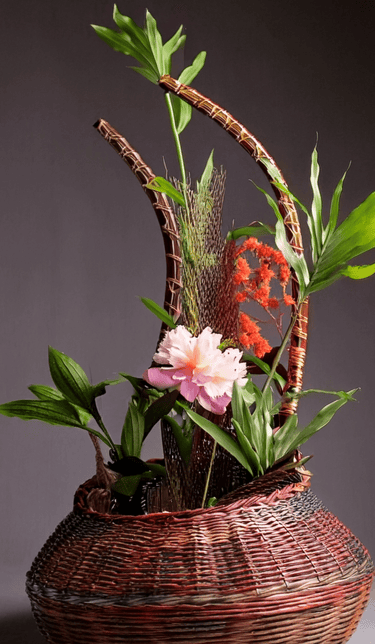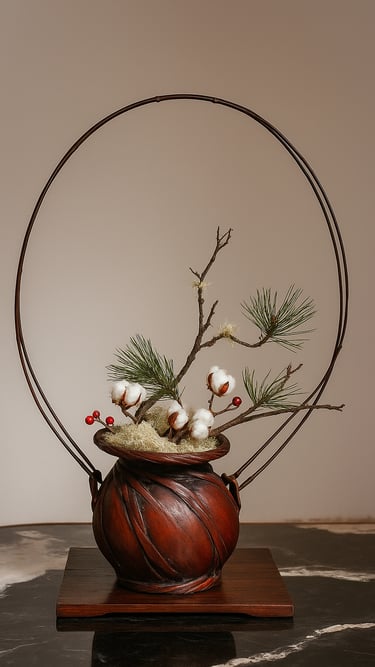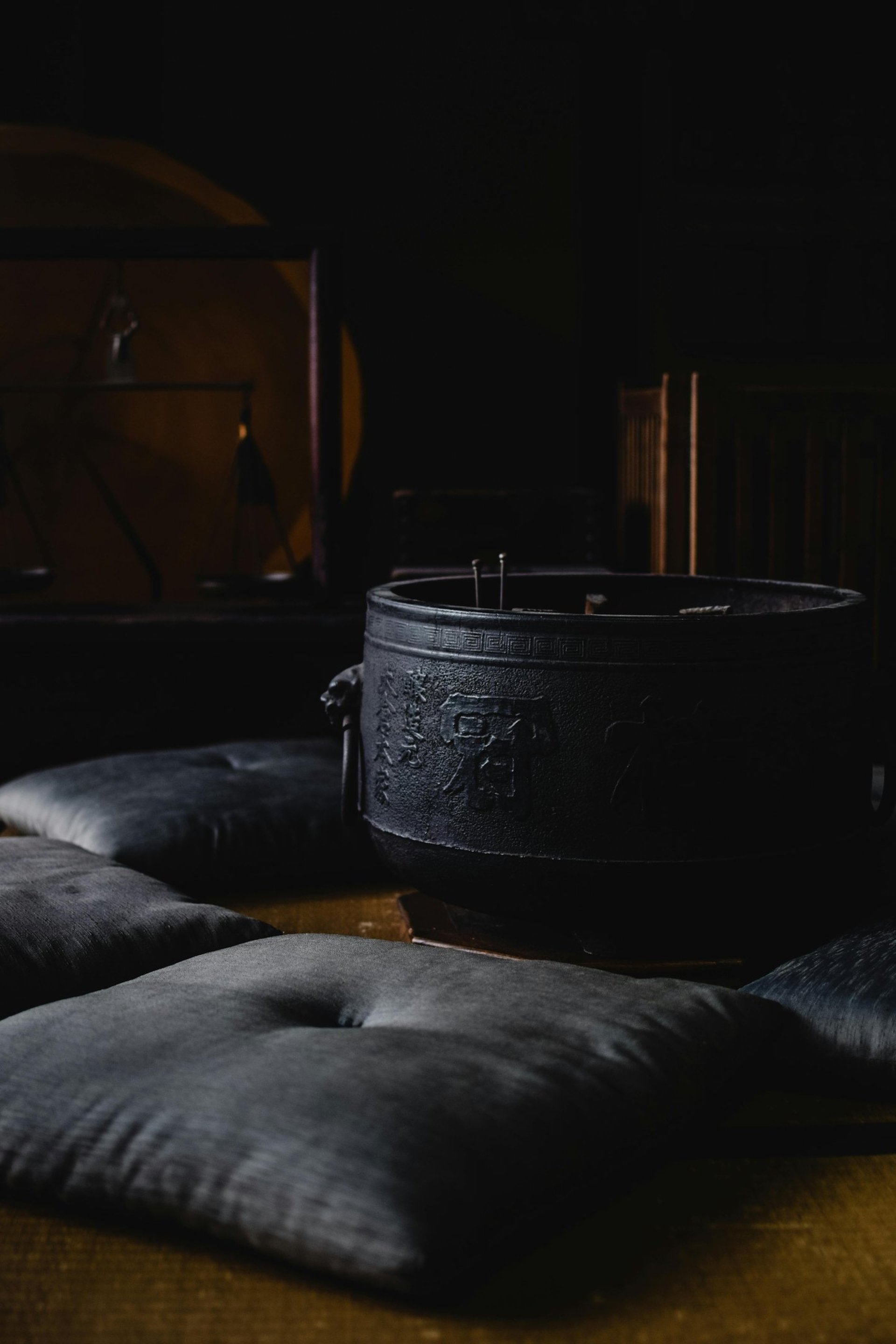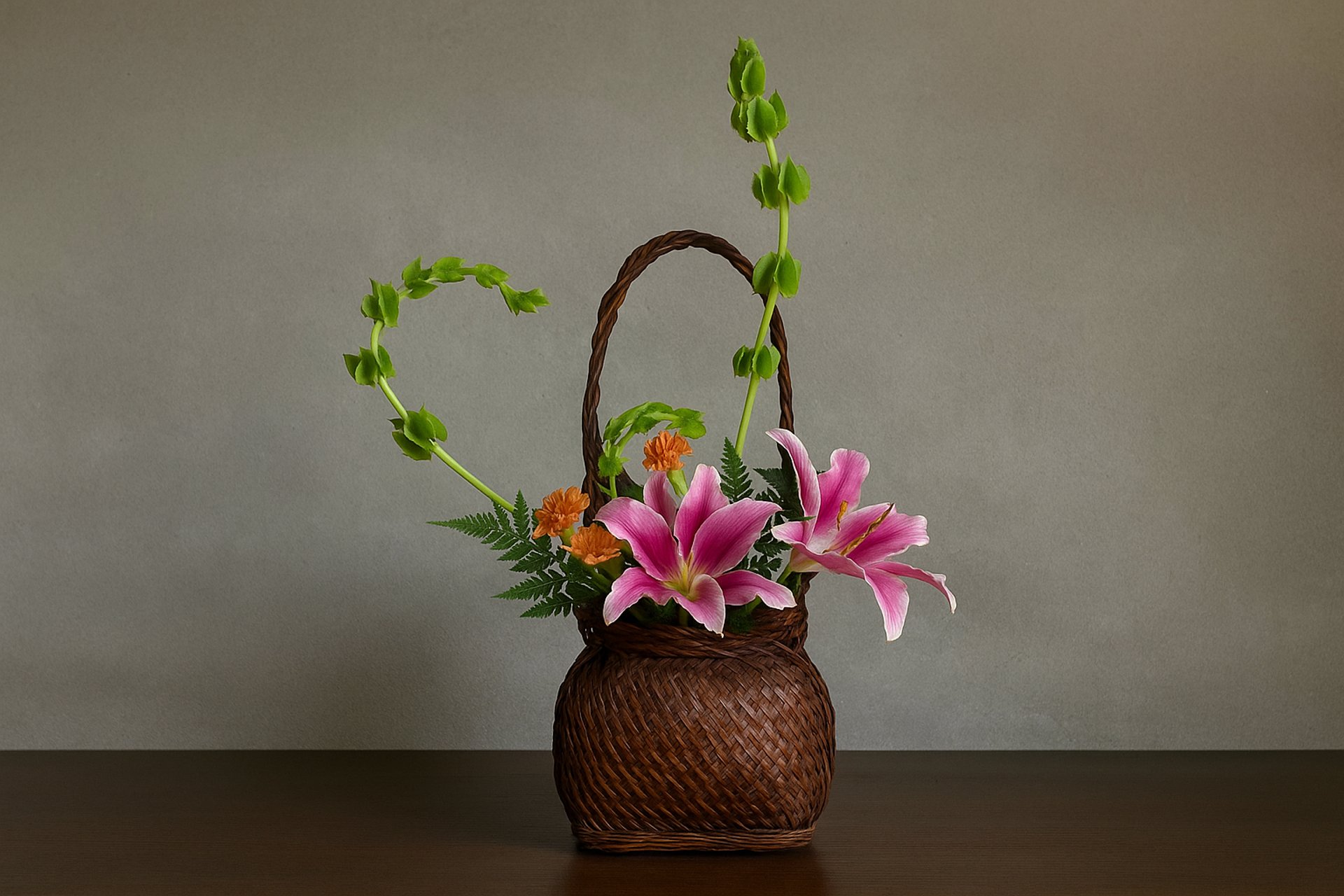
Hanakago — Traditional Japanese Flower Baskets
More than just a basket Hanakago (花籠) are traditional Japanese flower baskets used in ikebana, the art of floral arrangement. Woven by hand — often with incredible care and skill — these baskets embody rustic elegance, quiet refinement, and a deep connection between nature and the way of living.
What is a Hanakago?
At first glance, a hanakago (花籠) is simply a flower basket. But in Japan, it’s much more than that. Traditionally used in ikebana, the refined art of floral arrangement, the hanakago combines functionality and beauty in a way that’s deeply rooted in Japanese culture.
Usually crafted from bamboo or wicker, these baskets come in a wide variety of forms — some rustic and simple, others intricate and sculptural. While originally made for practical use, hanakago have long since crossed into the realm of art objects, appreciated for their craftsmanship, elegance, and quiet presence.
A Long History of Weaving and Beauty
Basket weaving in Japan dates back to the Jōmon period (around 10,000 BCE), making it one of the oldest known crafts in the country. But the hanakago as we know it began to take form during the Muromachi period (1336–1573), a time marked by the rise of Zen Buddhism and the development of the tea ceremony (chanoyu).
These cultural shifts emphasized a certain aesthetic: wabi-sabi — the beauty of imperfection, simplicity, and natural materials. Baskets, with their earthy textures and humble origins, fit perfectly into this worldview. They offered a softer, more organic alternative to ceramic or bronze vases, especially in settings that valued authenticity over opulence.
During the Edo period (1603–1868), ikebana grew into a refined and structured discipline with multiple schools, and the hanakago became a favored choice for more relaxed or seasonal floral displays. In regions like Beppu (Ōita Prefecture) and Kyoto, skilled artisans elevated bamboo weaving (takezaiku) into an art form — and hanakago into highly valued collector’s pieces.
Forms, Materials, and Features
Most hanakago are made of split bamboo, though some incorporate rattan or other natural fibers. The weaving may be light and open, or tightly woven with almost textile-like precision.
Common features include:
A basket body, sometimes lined with a hidden container for holding water
A handle — often arched and elegantly integrated (called mochite or tezuki in Japanese)
Sometimes, a wooden base or stand for presentation
Shapes vary widely, from tall and narrow to low and round. Each reflects the artisan’s intent, the plant material chosen, and the purpose of the arrangement it’s meant to hold.
How Hanakago Are Used in Ikebana
In ikebana, the hanakago is often used for nageire (natural-style) or freestyle arrangements, especially within schools like Sōgetsu or Ichiyō that encourage personal expression.
More than a vessel, the basket becomes part of the composition. Its woven texture and natural color enhance the contrast with delicate branches, wildflowers, or seasonal greens.
The hanakago brings:
Lightness and airflow to the arrangement
A sense of seasonal intimacy
A balance between structure and spontaneity
They’re particularly appreciated in summer, or for informal displays in tea rooms and traditional homes.
Cultural and Aesthetic Significance
The hanakago embodies the Japanese aesthetic of wabi-sabi — beauty that embraces imperfection, weathering, and the passage of time. A basket with faded bamboo or minor damage isn’t rejected — it’s often treasured more, because it carries history and character.
Today, hanakago are still used in ikebana, but they also appear in tea ceremonies, temple offerings, and interior decoration. Antique pieces made by renowned artisans are exhibited in museums, collected internationally, or passed down as family heirlooms.
Misubitsugi — Restoring with Respect
At Kizunaway, we restore antique hanakago using a method we’ve developed called misubitsugi — a textile-based repair technique inspired by kintsugi, the golden repair method used for ceramics.
Instead of gold, we use vintage Japanese fabrics to mend weak or damaged areas. The result isn’t just functional — it’s beautiful. Each stitch, each patch, is visible and intentional. The basket doesn’t pretend to be perfect; it proudly shows its story.
A Timeless Object
A hanakago is more than a container. It’s an object that speaks of careful hands, natural materials, seasonal awareness, and artistic restraint. Whether used for flowers, displayed as an art piece, or given new life through restoration, each basket carries a quiet kind of strength.
We invite you to explore these timeless pieces, and maybe — like us — fall a little in love.
